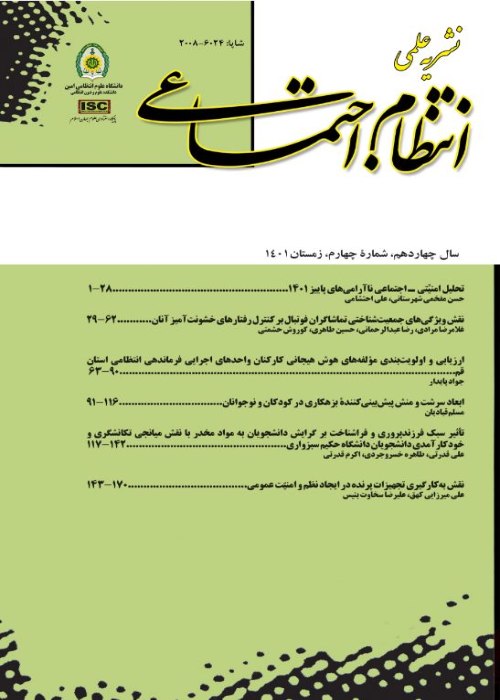Analyzing the Relationship between Second Generation Principles of Crime Prevention through Environmental Design and the Sense of Security in Historical Textures of Sabzevar City
Today, one of the main urban needs is security. Lack of security causes other planning and actions in the city to fail. Most residents of traditional neighborhoods and cities feel more secure than residents of new urban areas. The purpose of this study was to investigate the role and extent of second generation crime prevention through environmental design in influencing the sense of security in the historical textures of Sabzevar.
In terms of its objectives this study is of an applied research type and in terms of methodology it is considered as a descriptive-analytical study. The required data and information were collected using both field studies and documentary method. Bivariate analysis and multiple regression were used to assess the impact of second generation crime prevention through environmental design on citizens' sense of security through linear regression test.
Evaluation of Bivariate Correlation Analysis Model showed that in the collective culture group, the level of willingness to help others with the correlation coefficient of 0.181 and in the out-of-neighborhood communication group, the variable of the rate of out-of-neighborhood communication with 0.172, in the capacity threshold group, the variable of level of comfort and dissatisfaction with 0.020, and in the context of social solidarity index, the variable of the probability of helping people in times of danger with the correlation coefficient of 0.474 had the highest and direct impact on increasing the sense of security. Also the results of linear regression in determining the amount of impact of each of the second generation components of crime prevention through environmental design indicate that among the components, social correlation index with beta coefficient of 0.447 and capacity threshold with beta coefficient of 0.240 had the greatest effect on increasing the sense of security; also the components of collective culture (-0.06) and out-of-neighborhood communication (-0.038) had a negative and reverse relationship with sense of security.
Based on the results of the first hypothesis test (the relationship between the component of collective culture with the sense of security), it was found that the highest negative correlation coefficient (-0.130) existed between the two components and this hypothesis was not confirmed. Also, the second hypothesis (out-of-neighborhood communication with a sense of security) was rejected because of the negative correlation coefficient (-0.038). The results showed that the third hypothesis (relation of capacity threshold with sense of security) with the correlation coefficient of 0.240 was confirmed. Also, the fourth hypothesis (correlation of social solidarity with sense of security) was very strongly confirmed with the correlation coefficient of 0.447.
- حق عضویت دریافتی صرف حمایت از نشریات عضو و نگهداری، تکمیل و توسعه مگیران میشود.
- پرداخت حق اشتراک و دانلود مقالات اجازه بازنشر آن در سایر رسانههای چاپی و دیجیتال را به کاربر نمیدهد.


